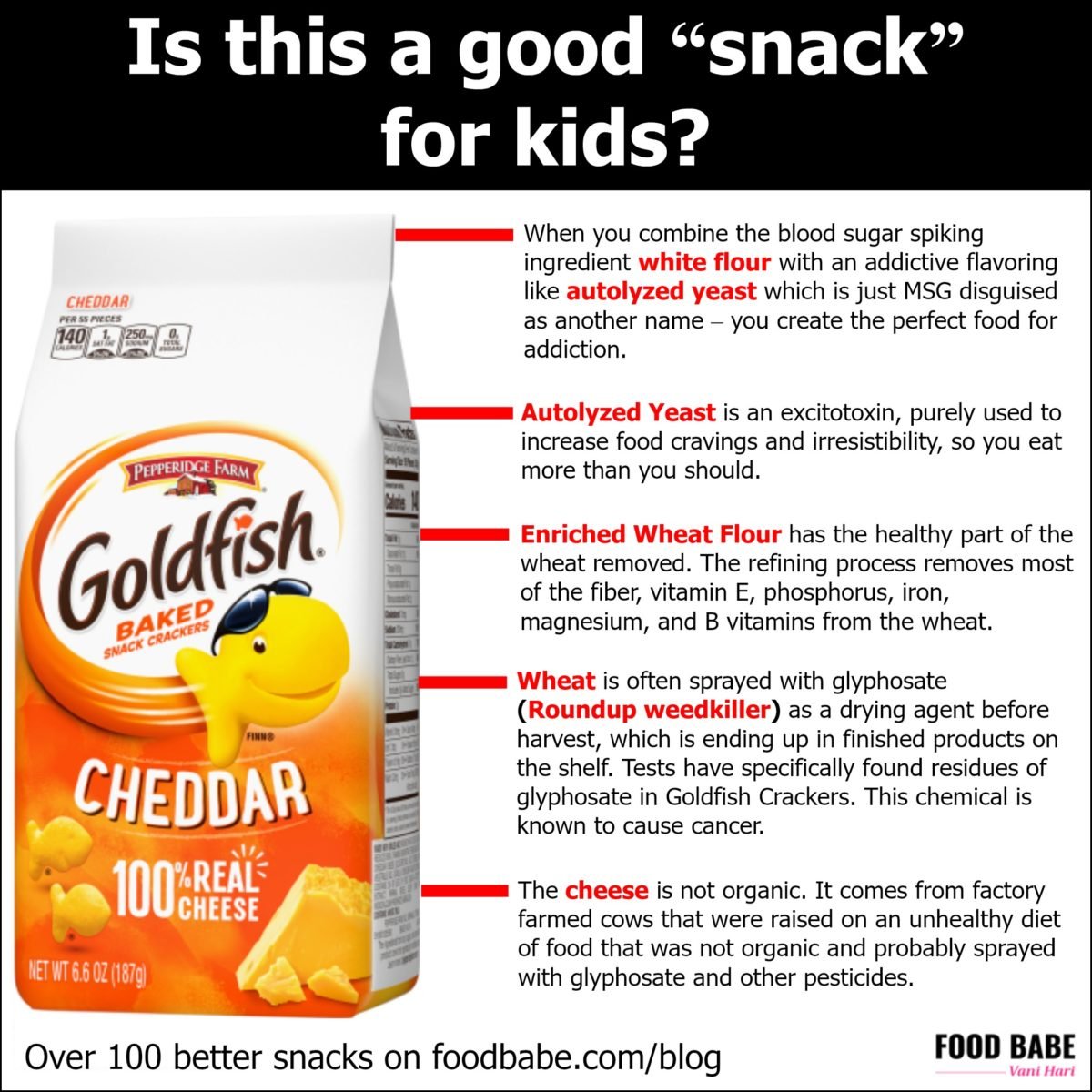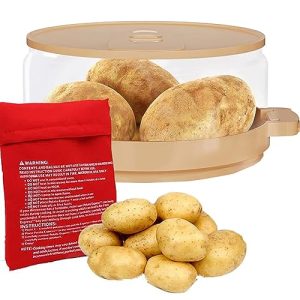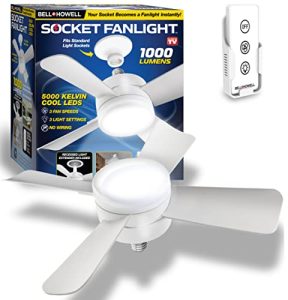Contents
- Introduction to alternative food options for goldfish
- Homemade food options for goldfish
- Live food options for goldfish
- Frozen food options for goldfish
- Pellet and flake alternatives for goldfish
- Fresh food options for goldfish
- Herbivore-based food options for goldfish
- Insect-based food options for goldfish
- Commercial alternative food options for goldfish
- Conclusion
If you find yourself in a situation where you have run out of fish food but still want to keep your goldfish well-fed, fret not! There are a variety of alternative food options that you can consider to ensure your finned friends are satisfied. From vegetables to fruits and even certain types of meat, this article will explore the various alternatives that you can offer your goldfish when you’re in a pinch. So, no need to panic when you can’t find their regular fish food – let’s discover some creative ways to keep those goldfish happily munching away!
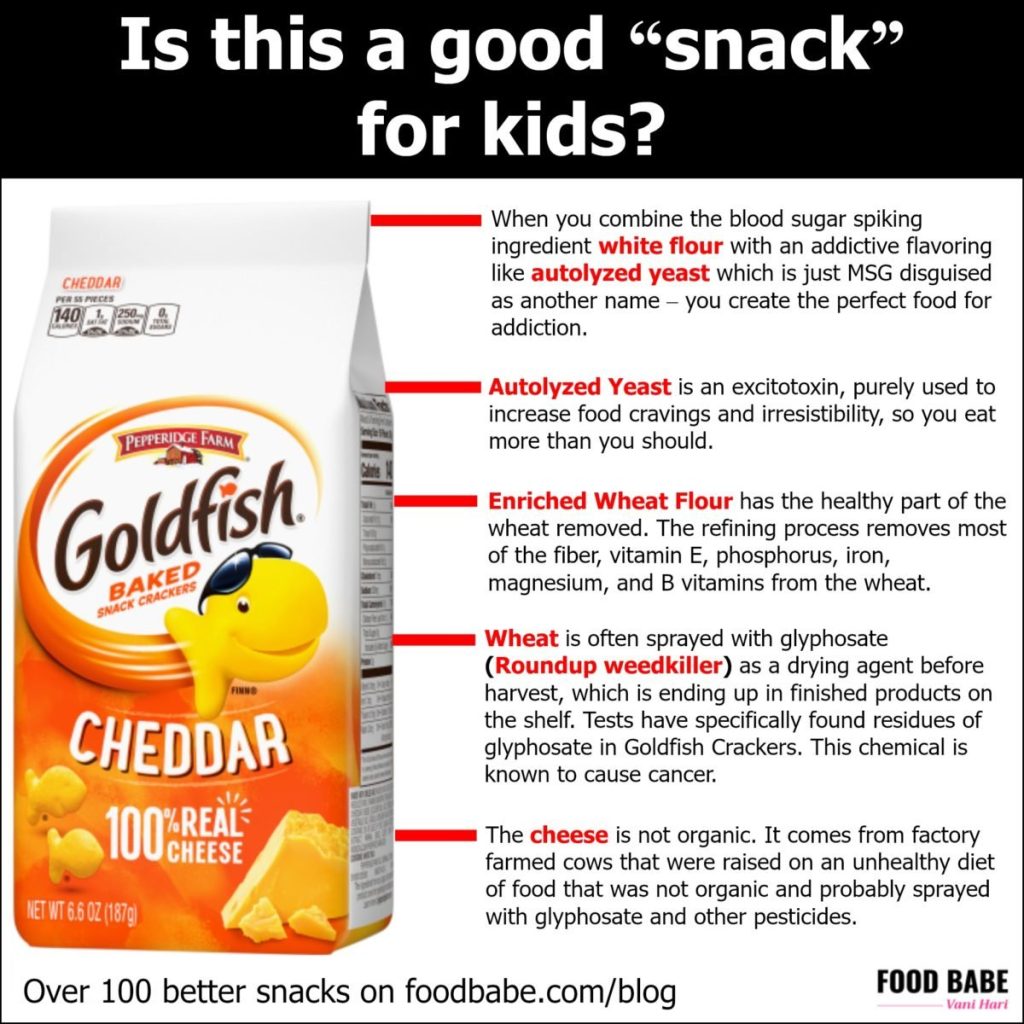
Introduction to alternative food options for goldfish
Goldfish are a popular choice of pet fish due to their vibrant colors and calming presence. As a responsible goldfish owner, it is important to provide your fish with a well-balanced and nutritious diet. While commercial fish food is readily available, there may be instances when you find yourself without fish food. In such situations, it’s crucial to know about alternative food options for your goldfish. This article will guide you through various homemade, live, frozen, pellet and flake alternatives, as well as fresh, herbivore-based, insect-based, and commercial options to keep your goldfish healthy and satisfied.
Why consider alternative food options for goldfish
While commercial fish food is designed to meet the nutritional needs of goldfish, exploring alternative food options can provide a range of benefits. Firstly, it allows for a more varied diet, which can mimic the natural feeding habits of goldfish in the wild. Secondly, alternative food options offer the opportunity to incorporate fresh, whole ingredients, which can enhance the overall health and coloration of your goldfish. Lastly, preparing homemade or alternative food can be a fulfilling activity for fish owners, fostering a deeper connection with their pets.
Benefits of providing alternative food for goldfish
Offering alternative food options to your goldfish can have several advantages. Firstly, it ensures a more diverse nutritional profile, leading to improved overall health, growth, and immune function. Secondly, it can help prevent boredom in goldfish, as they will have different textures and flavors to explore. Lastly, providing alternative food options can be cost-effective in the long run, as some ingredients can be sourced from your kitchen or garden, reducing the need for store-bought fish food.
Homemade food options for goldfish
When you are out of fish food, don’t worry! You can easily create homemade food options for your goldfish using common ingredients found in your kitchen. Here are a few categories of homemade food recipes to consider:
Vegetable-based food recipes
Goldfish are omnivorous creatures and can benefit from a diet rich in vegetables. You can prepare a simple vegetable medley by steaming or boiling carrots, peas, and broccoli until they are soft. Mash or blend the cooked vegetables into a paste or a fine puree, and let it cool before offering it to your goldfish. Another option is to finely chop lettuce leaves, cucumber, and zucchini, and mix them together to create a refreshing salad for your fish.
Protein-based food recipes
Goldfish also require protein in their diet to support their growth and development. You can make a protein-rich homemade food option for your goldfish by boiling an egg and removing the shell. Crush the boiled egg and mix it with a small quantity of shrimp or fish paste to create a paste-like consistency. Alternatively, you can also feed your goldfish small amounts of cooked and finely shredded chicken or turkey.
Fruit-based food recipes
While goldfish primarily rely on vegetables and protein, they can also enjoy the occasional fruit treat. Create a simple fruit salad for your goldfish by mashing up some ripe banana, watermelon, and mango. Ensure that the fruits are soft and are cut into small, bite-sized pieces suitable for your goldfish. Be cautious not to offer sugary fruits in excess, as it may lead to digestion issues.
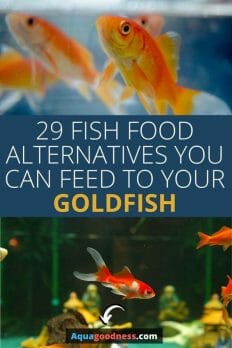
Live food options for goldfish
Live food can be a valuable addition to your goldfish’s diet, simulating their natural feeding behaviors and providing essential nutrients. However, it is important to ensure that the live food options selected are safe and appropriate for goldfish consumption. Here are some considerations and instructions for incorporating live food into your goldfish’s diet:
Importance of live food in goldfish diet
Goldfish thrive on a diet that includes live food, as it provides them with essential proteins and nutrients that may be lacking in commercial fish food. Feeding live food can also stimulate their predatory instincts, promoting mental stimulation and overall fish well-being.
Safe live food options for goldfish
When offering live food to your goldfish, it is crucial to choose options that are safe and nutritious. Some safe live food options for goldfish include daphnia, brine shrimp, and bloodworms. These options are readily available in most pet stores and online retailers. Ensure that the live food is sourced from reputable sources to avoid introducing any harmful parasites or diseases to your goldfish.
Instructions for introducing live food to goldfish
To introduce live food to your goldfish, start by offering small quantities and gradually increase the amount. This will allow your goldfish to adjust to the new food source, minimizing the chances of overfeeding or digestive issues. It is important to remove any uneaten live food from the tank after a few minutes to prevent the water from becoming polluted. Observing your goldfish’s behavior and appetite can help you gauge how well they are adapting to the live food.
Frozen food options for goldfish
Frozen food is another convenient and nutritious alternative for goldfish owners. Similar to live food, frozen food can provide essential proteins and nutrients while promoting natural feeding behaviors. Consider the following aspects when incorporating frozen food into your goldfish’s diet:
Benefits of feeding frozen food to goldfish
Frozen food for goldfish offers several advantages. Firstly, it can be stored for an extended period of time, making it a convenient option to have on hand. Secondly, frozen food is typically free from parasites and diseases that can be present in live food. Lastly, frozen food options are available in various varieties, allowing you to provide a diverse and balanced diet to your goldfish.
Types of frozen food suitable for goldfish
Goldfish can benefit from a variety of frozen food options. Some popular choices include frozen bloodworms, brine shrimp, daphnia, and krill. These frozen food options are widely available at pet stores and can be easily thawed before serving to your goldfish. Remember to follow the instructions provided on the packaging to ensure optimal feeding practices.
Tips for feeding frozen food to goldfish
To feed frozen food to your goldfish, thaw a small portion in a separate container using room temperature or aquarium water. Avoid using hot water or microwaving the food, as it can result in nutrient loss. Once thawed, use a small net or feeding tool to offer the food to your goldfish. Start with small amounts and remove any uneaten food within a few minutes to maintain water quality.
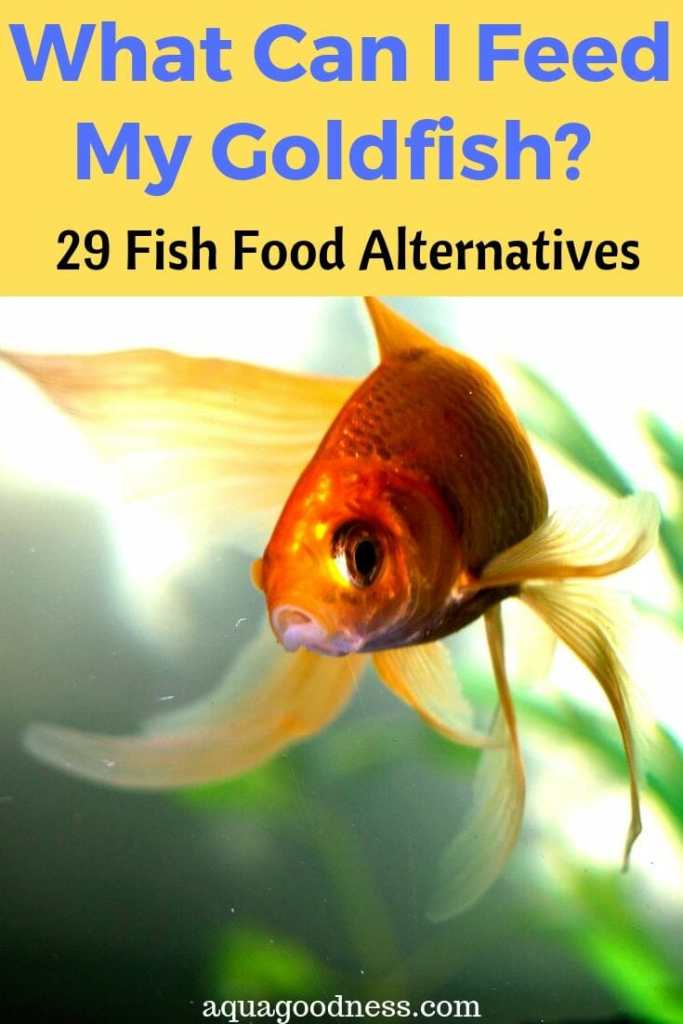
Pellet and flake alternatives for goldfish
Pellets and flakes are common types of commercial fish food, but there are alternative options available that offer the same nutritional benefits. These alternatives can provide a more varied diet and cater to the specific needs of goldfish. Consider the following alternatives to pellets and flakes for your goldfish:
Advantages of using pellet and flake alternatives
Using pellet and flake alternatives allows for a more diverse and customized diet for your goldfish. Different alternatives offer specific benefits, such as addressing digestive issues, promoting growth, or enhancing coloration. Additionally, pellet and flake alternatives often contain higher-quality ingredients, ensuring optimal nutrition.
Recommended pellet alternatives for goldfish
If you’re looking for alternatives to traditional fish pellets, consider options like gel foods or sinking pellets. Gel foods are nutrient-rich and can be customized to include various ingredients like vegetables, proteins, and vitamins. Sinking pellets can be an ideal choice for goldfish that have trouble eating floating pellets, as they sink to the bottom of the tank, allowing the goldfish to eat comfortably.
Recommended flake alternatives for goldfish
Flake alternatives are available in various forms and can cater to the specific dietary needs of goldfish. Consider alternatives like freeze-dried flakes, which retain the nutritional value of fresh ingredients while offering the convenience of flakes. Another option is powdered food, which can be easily mixed with water to create a paste or gel consistency that goldfish can readily consume. These alternatives can add diversity to your goldfish’s diet and promote healthy growth.
Fresh food options for goldfish
Including fresh food in your goldfish’s diet can provide essential nutrients while offering a natural and varied feeding experience. However, it is important to consider specific factors when offering fresh food to your goldfish:
Considerations when offering fresh food to goldfish
When using fresh food, it is crucial to maintain cleanliness and hygiene to prevent bacterial growth or water contamination. Avoid using fruits or vegetables that have been treated with pesticides or chemicals, as these can be harmful to your goldfish. Additionally, ensure that the fresh food is cut into appropriate sizes for your goldfish to prevent choking or other digestive issues.
Safe and nutritious fresh food options for goldfish
Goldfish can enjoy a range of safe and nutritious fresh food options. Some suitable options include blanched vegetables such as spinach, peas, or zucchini. These vegetables should be lightly cooked to make them more palatable for your goldfish. Additionally, small portions of fruits like watermelon, cantaloupe, or oranges can be offered as occasional treats, but should not be a staple part of their diet due to their natural sugar content.
Preparation methods for fresh food
Before offering fresh food to your goldfish, ensure that it is thoroughly washed to remove any dirt or contaminants. For vegetables, lightly blanching them in boiling water for a short time can help soften them and make them more digestible for your goldfish. Remember to let the fresh food cool before offering it to your goldfish, as extreme temperatures can be harmful to their delicate digestive systems.
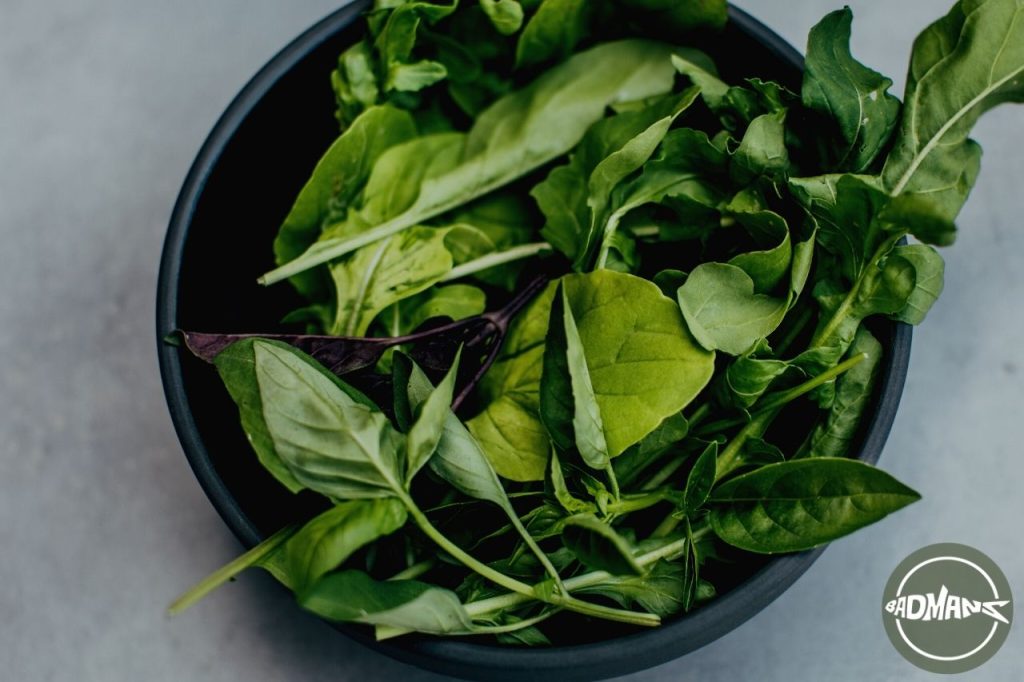
Herbivore-based food options for goldfish
Goldfish are omnivorous, but a herbivore diet can be a beneficial addition to their feeding routine. Herbivore-based food options provide essential nutrients derived from plant sources. Explore these herbivore options for your goldfish’s diet:
Herbivore pellets and flakes
Herbivore-specific pellets and flakes are designed to meet the nutritional needs of goldfish that thrive on plant-based diets. These options often contain a blend of vegetables, seaweed, and other plant ingredients. Herbivore pellets and flakes can be an excellent choice for goldfish that require a low-protein diet or have specific dietary restrictions.
Herbivore vegetables for goldfish
Offering a variety of fresh, herbivore vegetables ensures a rich and balanced diet for your goldfish. Some suitable options include leafy greens like spinach, kale, or romaine lettuce. Other vegetables like cucumber, zucchini, and peas can also be included to provide additional nutrients and hydration.
Herbivore live food alternatives
If you prefer to provide your goldfish with live food alternatives, consider options like duckweed or water lettuce. These aquatic plants are rich in nutrients and can be easily grown in a home aquarium or pond. Ensure that the plants are obtained from a safe and clean source, free from any pesticides or pollutants.
Insect-based food options for goldfish
Incorporating insects into your goldfish’s diet can provide essential proteins and add excitement to their feeding routine. It is important to choose safe insect options and take necessary precautions when feeding them to your goldfish. Consider the following when considering insect-based food options:
Benefits of incorporating insects into goldfish diet
Including insects in your goldfish’s diet offers various benefits. Insects are a rich source of proteins and essential nutrients that can support growth and overall health. Additionally, feeding on live or moving insects can stimulate your goldfish’s natural hunting instincts and provide mental stimulation.
Safe insect options for goldfish
When selecting insect options for your goldfish, it’s important to choose safe and appropriate options. Small insects like mealworms or small crickets can be suitable for goldfish. Avoid using insects that are too large, as they can cause choking or digestive issues. Ensure that the insects are sourced from reputable pet stores or bred specifically for pet consumption to prevent exposure to harmful chemicals or diseases.
Precautions when feeding insects to goldfish
When introducing insects into your goldfish’s diet, moderation is key. Start by offering small quantities and observe your goldfish’s reaction and appetite. Avoid overfeeding, as excess insects can pollute the tank water. Remove any uneaten insects after a few minutes to maintain water quality and prevent the growth of harmful bacteria.
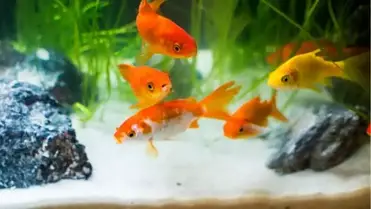
Commercial alternative food options for goldfish
Commercially available alternative food options provide a convenient and reliable way to meet your goldfish’s nutritional needs. Consider the following options when selecting commercial food for your goldfish:
Natural and organic fish food brands
Many fish food brands offer natural and organic options that cater to the specific dietary requirements of goldfish. These brands prioritize using high-quality ingredients without any artificial additives or fillers. When selecting a natural or organic fish food brand, consider products that contain a balanced blend of proteins, vitamins, and minerals suitable for goldfish.
Freeze-dried food options for goldfish
Freeze-dried food options offer the convenience of commercial fish food while retaining the nutritional value of fresh ingredients. Freeze-dried options like bloodworms, brine shrimp, and daphnia are readily available and can provide a source of protein for your goldfish. Ensure that the freeze-dried food is rehydrated before offering it to your goldfish to prevent any digestive issues.
Specialized alternative food formulas for goldfish
Goldfish have specific nutritional requirements, and some fish food brands offer specialized formulas to meet those needs. These specialized formulas often include ingredients like spirulina and high-quality proteins to support healthy growth and vibrant coloration. When selecting a specialized alternative food formula, ensure that it is appropriate for the specific type of goldfish you own, such as fancy goldfish or common goldfish.
Conclusion
Providing a varied diet for your goldfish is essential to ensure their overall health and well-being. By exploring the alternative food options mentioned in this article, you can enhance their nutritional intake while adding excitement to their feeding routine. Whether you choose homemade recipes, live or frozen food, pellet and flake alternatives, fresh food, herbivore-based or insect-based options, or opt for commercial alternatives, always consider the specific dietary needs of your goldfish. Remember to select high-quality ingredients, maintain cleanliness, and gradually introduce new food options. By investing time and effort into your goldfish’s diet, you can contribute to their long and happy life.

